Seek discomfort.
Lose face.
Take it on.
If I don’t ask I won’t get.
These are just a few of the lessons Stefan Sagmeister has learned in his life thus far. Ironic, isn’t it, to hear it’s important to seek discomfort from a man who’s spent a good portion of his life taking sabbaticals and exploring happiness? Perhaps that’s why he dared the AIGA Portland Board of Directors to pose nude for his upcoming talk at the Portland Art Museum on October 8th? But I digress…
Stefan Sagmeister. Provocative. Bold. Known for defying convention and exploring new ways of thinking, kind of like Captain Kirk, if Captain Kirk were a tall, dark-haired, Austrian designer. We’ve seen his work and admired the way he’s able to synthesize typography, photography, performance art, and film. We’ve watched his TED Talks and fantasized about leaving the office for a year to make dog-inspired furniture in Bali. Now we’re just counting down the days till September 1st, when tickets for his Design Week Portland talk Stefan Sagmeister: Design and Happiness go on sale.
Hi, Stefan. Thanks for taking the time to answer a few questions. Over the years, you have spoken at various AIGA chapters and also been honored as an AIGA medalist. What impact has the organization had for you and your career?
In the past 10 years I’ve pretty much spoken for every design organization in the world — Iceland to Brazil, Alaska to South Africa — and AIGA is my favorite design organization anywhere. AIGA had a big impact on my career and the trajectory of the studio, maybe most of all in its wonderful stance against pitching. It saved us from so much wasted work, time, and money!
We’re glad that AIGA has affected you and your work in such positive ways. That is a really great example for young designers. What advice would you give to someone starting out?
Look for a design company that does the kind of work you want to do. Try really hard to get a job with them. Work your ass off. Then start your own place. It’s a great job.
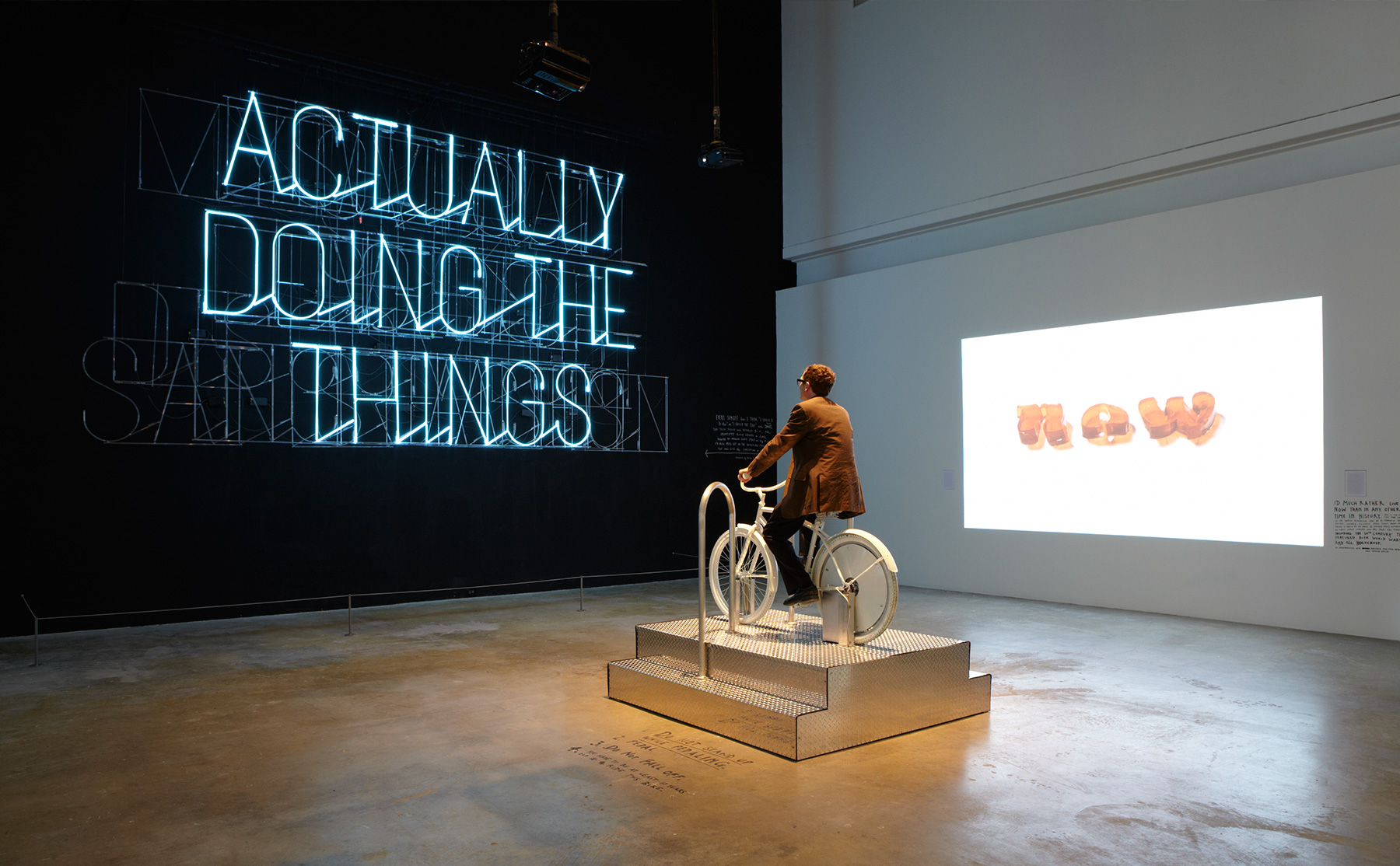
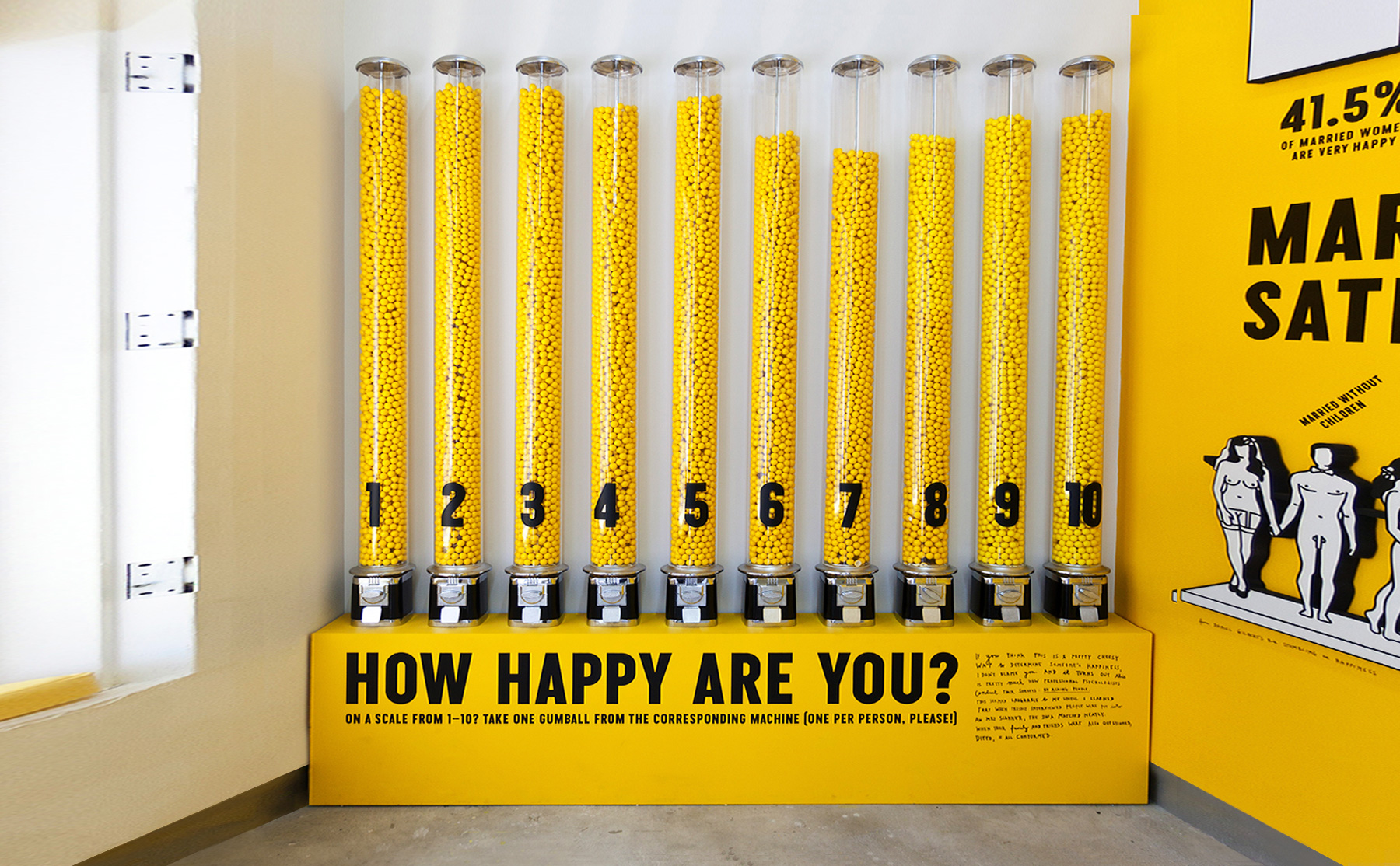
Are there any designers today who take your breathe away?
I have had a deeply moving experience, much more than a simple ‘wow effect’, while observing James Turrell’s new Skyspace, permanently installed at Rice University in Houston, Texas. This is basically a large ceiling with a square hole cut into it. He reflects the colors of strong LED’s on the ceiling, running slow-moving gradients of color. This contrasts with the color of the sky seen through the square hole, that, when you observe it at dawn, features its own slow-moving gradients. The subtlety of the color changes, and the incredible richness and ultimate mind-shattering gorgeousness and pure beauty of the color, creates a true experience. The night sky turns from blue to dark blue, to darker blue to the darkest of dark blues I’ve ever observed, something that would be impossible to print or weave or create in any other way (after all it is infinite space that creates that blue). It made me see nature in a very new way.
Over the years, you’ve created a multitude of projects that span vast mediums — from print to film to public installations, gallery exhibitions, and interactive pieces. What types of projects are your favorite to work on and why?
Right now it is film, as I’ve been struggling with it for 5 years and just now seem to have cracked the nut that gives me the illusion of progress. But I don’t know enough that I would read this as boredom.
The age old battle of Boredom vs. Designer’s Block. How do you keep yourself from falling victim to designing the same ol’ thing each time?
The process I’ve been using most often has been described by Maltese philosopher Edward DeBono, who suggests starting to think about an idea for a particular project by taking a random object as point of departure. Say I have to design a pen, and instead of looking at all other pens and thinking about how pens are used and who my target audience is etc., I start thinking about pens using…..(this is me now looking around the hotel room for a random object)….bed spreads. Ok, hotel bedspreads are…sticky….contain many bacteria… ahh, would be possible to design a pen that is thermosensitive, so it changes colors where I touch it, yes, that could actually be nice: an all black pen, that becomes yellow on the touching points of fingers/hands… not so bad, considering it took me all of thirty seconds.
Of course, the reason this works is because DeBono’s method forces the brain to start out at a new and different point, preventing it from falling into a familiar groove it has formed before.
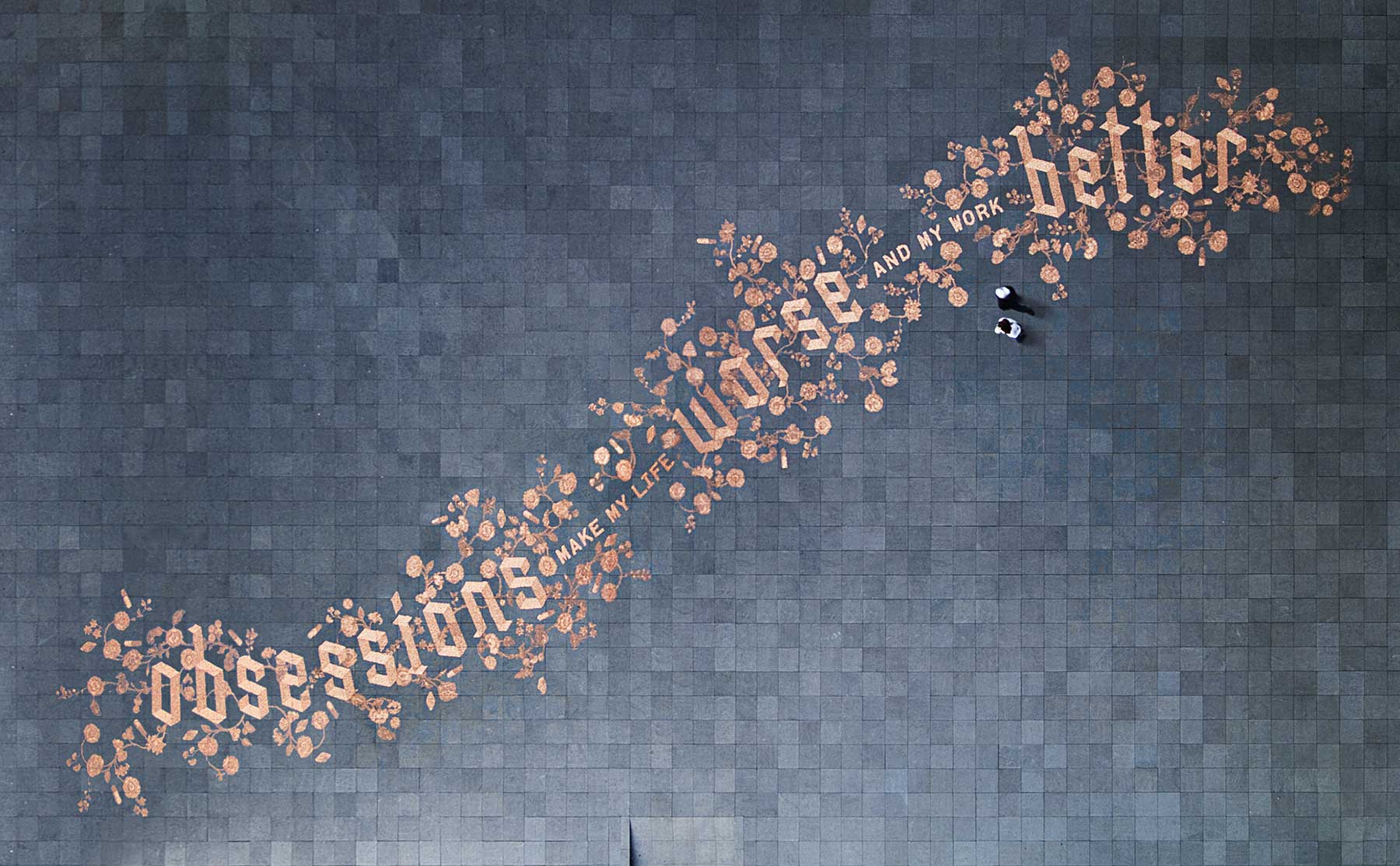
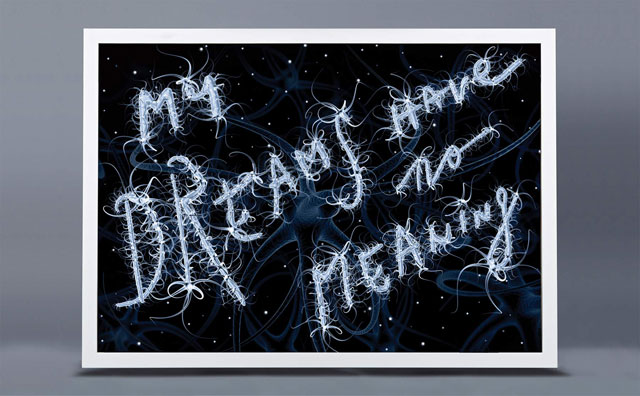
What is your favorite part of the design process?
That moment when I can think about something freely, with no deadline looming, when I don’t mind that nothing might be coming.
If you could dare us to do something, what would it be?
A nude photo of the entire AIGA Portland board as an opening slide for my talk?
Touché. Next question: How has your life changed since bringing on Jessica Walsh as your partner?
I am much more relaxed about the studio.
Jessica has been quoted as saying she’s learned a lot from you on how to run a studio and talk about work with a client. What advice would you give to the independent designers in Portland who are running their own studios?
Don’t take any advice from people who are not familiar with your situation.
How do you go about discussing your work with a client?
From their point of view. I only mention things that are relevant to their project.
Can you talk about why you’ve limited the growth of your studio to five people?
When I look around, most of the work that I respect in our field is done by small entities. This is true for the work in the cultural sector, but also includes all the big branding work: the main logos for AT&T, Nike, Apple, Google, IBM, Coca Cola, and many more were all designed by tiny studios. We are not financially dependent on our clients, we have the freedom to pursue unusual directions, we are nimble, we are focused, we are responsible. We all get to design and be involved in all aspects of the job, so we are not bored. There is little need for meetings. There are rarely any misunderstandings internally so what we design mostly gets produced.
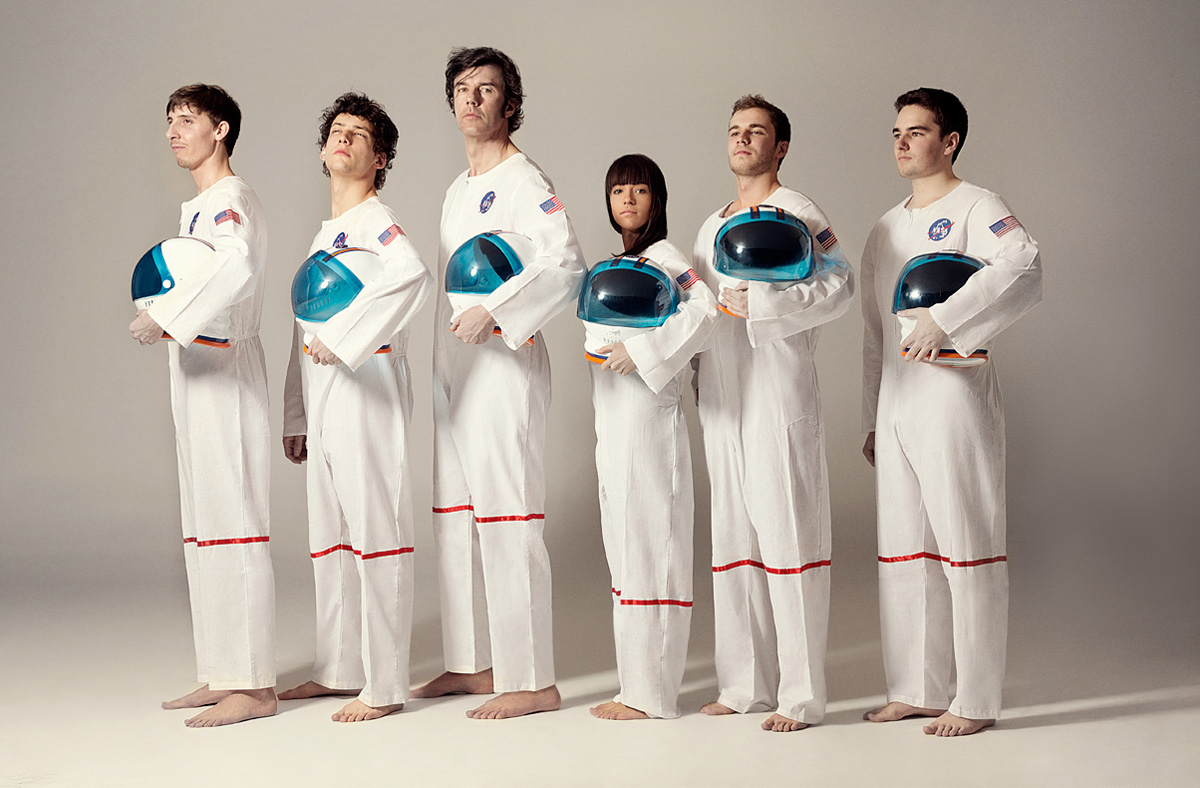
What are you most looking forward to seeing in Portland this visit?
That photo of the board.
Haha. Circling back to the photo, huh? We’ll just have to see about that…
You’ve mentioned in other interviews that taking a sabbatical is crucial for replenishing your creativity. Do you have any advice for those of us in need of replenishing, who do not have the financial resources to take a year off work?
Any time frame reserved for ‘trying things out’ would work: four hours a week, three days a month, whatever you can spare. The very important thing will be to see this time as holy, i.e. it can’t be moved, changed, or eliminated by anything that has a deadline attached to it.
What’s your most recent song obsession? Your favorite book? Your favorite curse word? And the one thing you want to learn this year?
Pull It Away by Siskiyou.
A Man in Love by Karl Ove Kjartanson.
You are wearing a mantle of bullshit.
How to end a film.
Speaking of film, do you have a favorite?
Adaptation by Spike Jonze
You are originally from Austria, but have been living in New York for a long time. How does living there impact your creativity or the work that you do?
I have been there now for over 20 years altogether and it’s still my favorite city in the world. My chief love about New York stems from the fact that so many people are from other countries, which makes everybody quite open to meet others. I come from Austria where everybody is from Austria; most people grew up in Austria. Everybody acquired his or her friends in high school or university. So once you are 30 or 40, you don’t need to make new friends. In NYC, if I’m willing, I can meet a lot of people. And I’ll meet not just graphic designers, but I can meet directors, architects, publishers, writers, politicians, a very wide range.
And because I meet them, I see how they are, and I realize these guys are not so much smarter than me. I can do that too. It’s much easier for me to find my own way because I’m not stuck with the same group at all times.